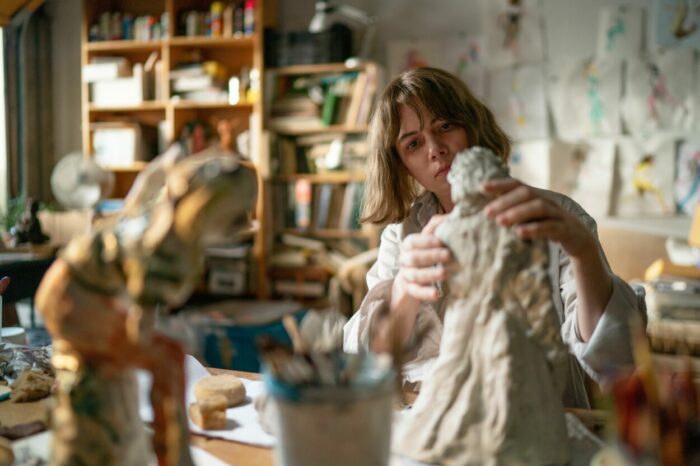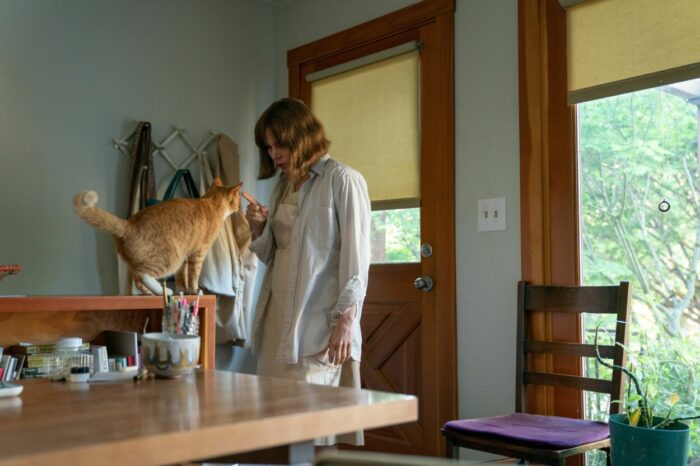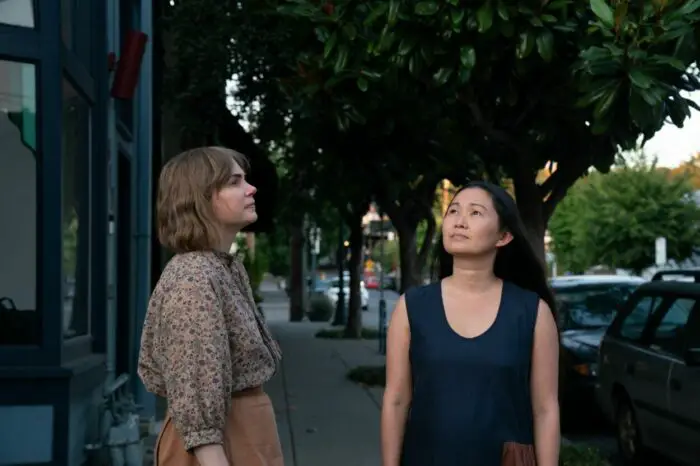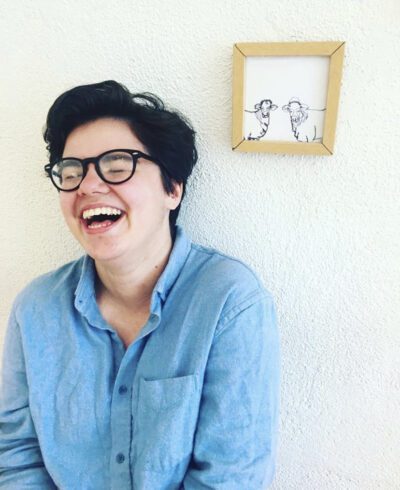Showing Up opens with its credits on display over a series of watercolor sketches. The camera work feels like a home movie, with quick zoom-ins and frequent attempts at focusing the lens. What at first seems like a magnificent studio is revealed to be the small, cramped garage that belongs to Lizzy (Michelle Williams). She’s a sculptor on the precipice of a life-changing exhibition. Of course nothing is ever easy, and relationships with family, friends, and her landlord all come to a head in the days leading up to the exhibition.
Director and co-writer Kelly Reichardt has made a career of creating large-scale productions about the simplest aspects of her life. Her 2020 feature, First Cow, is a gentle reexamining of frontier, cowboy masculinity through the friendship of two outcasts (John Magaro and Orion Lee). They bond over a cow and oily cakes. Reichardt’s deft hand made First Cow, which has no Western-style shootouts or fight sequences, effortlessly moving in its simplicity.

Showing Up never manages to worm its way into the hearts of the audience in the way past Reichardt films have. Its premise is equally small, but the problem may be that Lizzy is a generally uncompelling lead character. Other than her desire to work on her art, the audience doesn’t get to know her very well. This type of minimalist, character-driven film needs to have an interesting and open individual as its focus, but Lizzy is not that individual. While the audience is told that she’s desperate to make art her career, it’s difficult to see any passion in her eyes. There are long scenes where Lizzy is gently sculpting a pigeon out of clay, but it looks like the act is a burden to her.
Films should show the difficulty that exists in the pursuit of making art. It’s not easy to get up every day and expend energy for creative projects when it’s so difficult to keep a job, pay rent, and maintain peace within a complicated family. That’s the reality, and there’s nothing wrong with an honest representation about the hurdles of creating and managing an artistic career. There is nothing Lizzy does in Showing Up that makes sense of why she’s putting herself through this. Rather than giving her freedom, art seems to trap her in her own self-doubt.

There’s an interesting juxtaposition between Lizzy and the students at the school where she works. They’re young, teenagers or early twenties, and there’s a relaxed nature to them. They feel as though they have all the time in the world to make an impact and to showcase their art. The students lack a sense of urgency, which is entirely natural. They’re at the beginning, time is on their side, and the world is sprawling before them. It isn’t rejuvenating for Lizzy to be around these students, it’s stifling. Her stuckness is abrasive, her ending chafing against their beginnings. The problem with this juxtaposition is that nothing’s done with it. The film has quite a few sequences where Lizzy is walking around campus observing these students, but she never interacts. Her on-campus job is administrative, which lets her remain separate, but their joyous laughter and chatting right outside her window never let Lizzy forget about their presence.

There’s a subplot of an injured pigeon throughout Showing Up that mirrors Lizzy’s feelings of inadequacy with her landlord Jo (Hong Chau). While Lizzy is forced to pull all-nighters and squeeze in her art-making when she can, Jo is free to spend all day in her studio. It’s no surprise that Jo is able to show her art in more galleries, simply because she has more time to create with fewer burdens. The pigeon is another common thread that binds them together. Jo revives the pigeon after it was attacked by Lizzy’s cat and the two begin an awkward co-parenting relationship that mirrors their tense landlord/tenant relationship.
Showing Up distills artmaking into a monotonous activity without the rose-colored glasses of romanticizing the process, but without the process, what do we have? Art is the process. It’s the time, effort, and love that go into creation. To dispose of that is to lose the very essence of art. The audience sees the final result of Lizzy’s work, but they feel as though she hated the process. And sure, the process is painful, time-consuming, and filled with anxiety and anger, but the journey is just as important as the creation.



